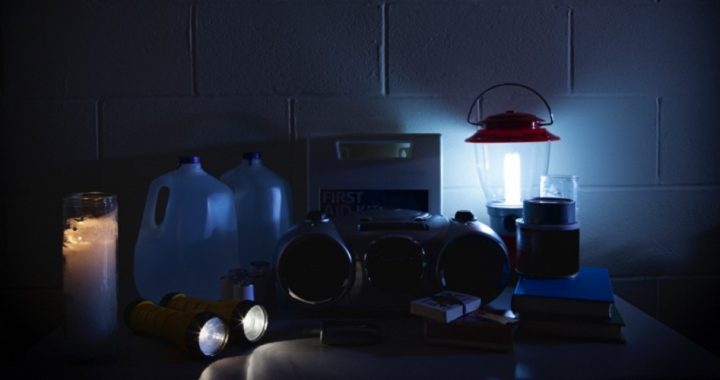
Podcast: Play in new window | Download ()
Subscribe: Android | RSS | More
Last Saturday’s power outage in New York City affected fewer than 100,000 people in a city of 8.6 million. It lasted less than six hours. It was headline news for a brief moment, and then everything returned to normal.
For Douglas MacKinnon, however, it was an early warning that few are taking seriously. MacKinnon served in the White House as a writer for Presidents Ronald Reagan and George H. W. Bush, and afterwards in a joint command at the Pentagon, where he held a top-secret clearance.
Three weeks before the NYC power outage, MacKinnon wrote an eerily ominous and prescient article for Fox News: “Will you survive the coming blackout?” He posed the question most people don’t want to answer: In the event of a “cataclysm — a complete loss of electricity and every mode of convenience — how will you survive?” He added: “In the blink of an eye, you will lose access to money, food, gasoline, communication, medicine, medical attention, heat, air conditioning, and security. Gone.”
His suggestion? “Make a plan, because you will be on your own.”
Three weeks later MacKinnon was back, writing for Fox that because of the antiquated power grid — “antiquated junk desperately in need of billions of dollars in repair … which unfortunately is connected to other outdated infrastructure” the New York City power outage was an early warning.
He noted that the grid is so outdated and fragile that in 2003, “a tree branch fell on a power line in Ohio and, instantly, over 50 million people in the United States and Canada were hit with cascading blackouts.”
Con Ed (Consolidated Edison, Inc., the energy company serving New York City) officials initially were baffled over the weekend outage. On Sunday, its president couldn’t explain “the cascading widespread nature of the failure.” On Monday, the culprit had been found: a “fault” in a 13,000-volt transformer that somehow caught fire. A statement from Con Ed was less than reassuring: “In this case, primary and backup relay systems did not isolate a faulted 13,000-volt distribution cable at West 64th Street and West End Avenue.” The Con Ed spokesman Mike Clendenin’s warning to NYC residents didn’t add to anyone’s confidence: “We expect that there could be [more] service outages — those things happen during heat waves.”
Edsel Cook, at writer at National Sentinel, explained what happened: “Whenever equipment exceeds its rated capacity, it gives off extra heat. The longer it runs past its limit, the hotter it gets. Overheated as well as overloaded, the equipment fails. Every new failure forces the power grid to place heavier loads on the remaining functional substations and power lines. The result is the domino effect of cascading failures.”
History records that MacKinnon’s reference to the northeast blackout of 2003 understated what happened. It began on August 14 and lasted for two weeks. It affected 10 million people in southern and central Ontario and another 45 million people in eight U.S. states. The outage was blamed on a “software bug” that cascaded into a collapse of the entire eastern interconnected power grid.
This outage followed one that occurred in November, 1965, which affected 30 million people in the eastern United States. It was blamed on “a safety relay that had been mis-programmed.”
The New York City power outage that occurred in 1977 affected all nine million of the city’s residents and was blamed on three separate lightning strikes. What happened next made the news. Mayor Abe Beame told the frightening story: “We’ve seen our citizens subjected to violence, vandalism, theft, and discomfort. The Blackout has threatened our safety and has seriously impacted our economy. We’ve been needlessly subjected to a night of terror in many communities that have been wantonly looted and burned. The costs when finally tallied will be enormous.”
The New York Times expanded on Beame’s description: “Because of the power failure, LaGuardia and Kennedy airports were closed down for about eight hours, automobile tunnels were closed because of lack of ventilation, and 4,000 people had to be evacuated from the subway system.”
During that 1977 outage, more than 1,600 business were damaged, looted, or burned. Around 550 police officers were injured in the mayhem, and 4,500 looters were arrested. Shea Stadium went dark during a baseball game, along with most of the city’s television stations.
Despite spending $2 billion a year, Con Ed is failing to keep up with the increasing demands for power. New Yorkers have been placed on alert. The rest of the country ought to be as well.
Image: JulNichols via iStock / Getty Images Plus
An Ivy League graduate and former investment advisor, Bob is a regular contributor to The New American, writing primarily on economics and politics. He can be reached at [email protected].



